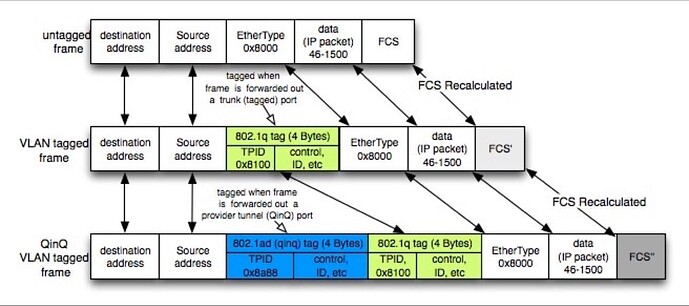-
VLAN & QinQ are 2 important protocols used in networking: wireless and Transmission.
-
VLAN can be used to differentiate services and Traffic clients transmitted on the same network.
-
VLAN defined as IEEE 802.1Q.
-
VLAN header is 4 bytes.
-
Most imports info in the header is the 12 bit VLAN ID.
-
IEEE 802.1Q allow use to use up to 4094 VLAN.
-
With the expansion and developments in the network domain we need for more VLANs
-
That’s why we have to use QinQ.
-
QinQ allow use 2 VLAN Tags (inner and outer).
-
First tag called C Vlan and 2nd Tag called S VLAN.
-
C VLAN is the customer VLAN and used to identify the user.
-
S VLAN is the service provider VLAN and it identifies the carrier or provider.
-
We can use QinQ in different application scenarios like differentiation between voip services, internet access and IPtV as an example.
-
That can be done easily assigning different users a different C VLANs, and assign different S VLANs to different services.
-
QinQ defined as IEEE 802.1ad.
-
QinQ extend vlan range and allow up to 4094 * 4094 vlans.
-
QinQ can connect L2 networks in the same vlan through backbone network.
-
Customer router add and remove vlan tag , service provider add and remove s Vlan tag during the traffic flow.
-
We can also call it VLAN stacking.
-
It’s a way of VPN implementation and used by service providers.
-
Later will explain what’s VXLAN and the difference between VLAN , QinQ , VXLAN
LinkedIn: ![]()
